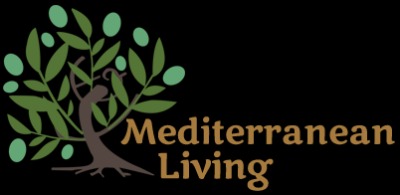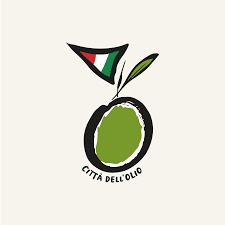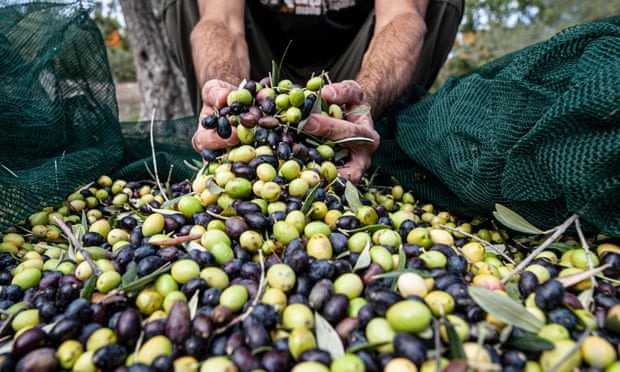
Olive Grove Calendar
Jan. 7, 2025
We have prepared a practical guide to support olive growers in managing their olive trees throughout the year 2025. Each month is accompanied by information on the phenological phases, processing, fertilization and phytosanitary defense practices, offering a useful overview for planning the necessary activities.
JANUARY
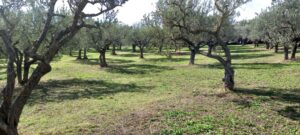
Phenological Phase: vegetative rest.
Soil work: if the olive grove is grassed, subsoilers should be used to make vertical cuts in the soil, leaving the surface grassy layer intact, while descending to a depth of about 30 cm, improving the soil structure, encouraging the rooting of plants and drainage of precipitation, avoiding runoff phenomena.
In bare soil olive groves it is possible to use subsoilers, with fixed or spring teeth, in this way the loosened soil is not brought to the surface and it is possible to use a tractor of medium or low power, 50-70 hp. The depth to be reached will always be 30-35 cm. If the subsoiler has a limited width compared to the distances between rows, it will be better to start from the sides and finish in the center: in the end the worked soil will appear loosened on the surface and, in section, the macroporosity and crumbling of the mass will increase.
Pruning: pruning to prevent wood decay, called slupatura.
FEBRUARY
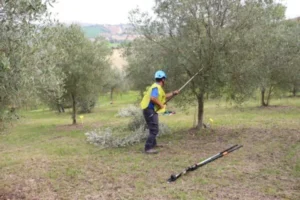
Phenological Phase: vegetative rest, awakening begins at the end of the month.
Pruning: prepare for production pruning. At the end of the cutting operations, disinfestation with copper products must be carried out: they reduce the fungal population and cause the leaves affected by peacock eye to fall.
New plants: positioning of young plants.
MARCH
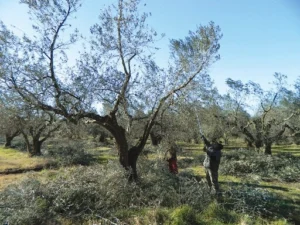
Phenological Phase: vegetative recovery, first swelling and differentiation of buds.
Pruning: continue cutting operations.
Phytosanitary defense: if not implemented post-pruning, a phytosanitary treatment with copper products is recommended. If wood parasites, Fleutribo and Ilesino, create “bait bundles”.
New plants: positioning of young plants.
APRIL
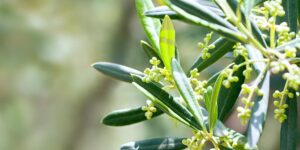
Phenological Phase: budding and growth of apical and lateral shoots. At the end of the month, the first buds may appear.
Fertilization: apply nitrogen fertilization; foliar fertilization may be used.
Pruning: continue with cuts.
Phytosanitary defense: if possible, start controlling the population of olive fly consisting of overwintering individuals. Olive moth: start monitoring for the first “anthophagous” generation. Cecidomyidae: check for the presence of galls on leaves. Brown marmorated stink bug: adults leave the overwintering sites. Yellow woodworm: positioning of traps for mass capture in olive groves.
New plants: complete positioning of young plants.
MAY

Phenological Phase: in the first ten days the little ones develop, in the second fortnight the flowering occurs.
Fertilization: use of nitrogen and microelements, boron.
Phytosanitary defense: for the Moth , continue monitoring the anthophagous generation, establish the eventual phytosanitary treatment. For wood parasites: remove from the olive grove and burn, if possible, the "bait bundles". Euzofera: place traps to monitor captures. Peacock's Eye: eventual phytosanitary treatment with copper or Dodine.
JUNE
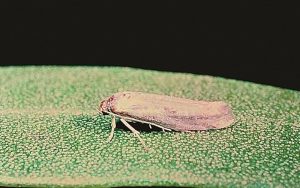
Phenological Phase: after the first decade, the fruit set of the drupes and the beginning of the first olive swelling occur.
Phytosanitary defense: Olive moth , monitoring of the anthophagous generation, establish any phytosanitary treatment with insecticides (useful for containing the population of other animal parasites). Fly: positioning of monitoring traps and mass capture. Olive cottonworm: possible presence. Scale insects: monitor presence.
Asian bug: evaluate the presence of egg masses. Euzofera: monitor captures. Fungal parasites ( Peacock's eye, Cercosporiosis ): use of fungicides for containment.
JULY
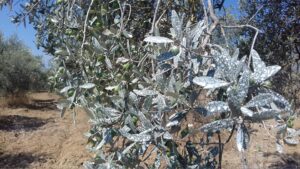
Phenological Phase: first olive swelling, after the first fortnight the stone hardens.
Phytosanitary defense: Fly : monitoring of adult flight, generally and according to the climatic conditions the first generation of summer Fly appears in the first two weeks of July, for the possible containment use of anti-deponents (kaolin, zeolite, lime or talc), possible intervention with insecticides and anti-deponents, control at the end of the month of the functioning of the mass capture traps (hormonal and food attractants).
AUGUST
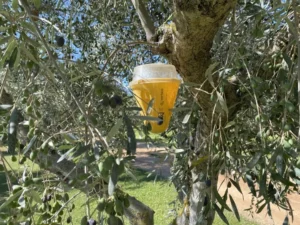
Phenological Phase: second olive swelling, accelerates inolition, i.e. the formation of fats inside the olives.
Pruning: possible green pruning (summer pruning), with the cutting of suckers, shoots, branches damaged by any climatic events.
Phytosanitary defense: Olive fly , monitoring of adult flight and evaluation of active infestation on olives, possible phytosanitary intervention with anti-deponents and insecticides. Margaronia and Asian bug: presence control, interventions against the Olive fly reduce their population. Peacock eye or Cycloconium : maintain constant observation. Sooty mold : where present, an intervention with copper-based products is recommended.
Hail events: if they occur, disinfection of the wounds with copper-based products is recommended.
SEPTEMBER
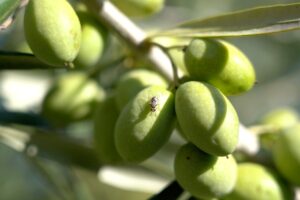
Phenological Phase: beginning of veraison.
Phytosanitary defense: Olive fly: monitoring of adult flights and control of infestations, if necessary intervene with anti-deponents and insecticides.
Margaronia and Asian bug : maintain control, any intervention against the fly contains its population. Otiorhynchus: evaluate presence and, if necessary, place synthetic fiber bands around the base of the trunk. Peacock eye: evaluate the widespread presence of spots in case of infections use copper-based products.
OCTOBER

Phenological Phase: veraison, start evaluating the ripening indices.
Work: prepare the land for the harvesting operation.
Harvest: between the second and third ten days of the month the harvesting operation begins.
Phytosanitary defense: Olive fly: continue monitoring and controlling infestations, if necessary intervene with active substances, paying attention to the withdrawal times. Margaronia and Asian bug : maintain control. Yellow woodworm : if the presence of galleries is found, especially on young branches, proceed to eliminate the insect mechanically with the use of wire.
NOVEMBER

Phenological Phase: maturation – olive harvest.
Fertilization: once the harvesting operations are completed, carry out the autumn fertilizations, at the end of which it is then advisable to intervene with copper products.
DECEMBER
Phenological Phase: start of vegetative rest.
Phytosanitary defense: once the harvest activity is completed, a disinfection intervention with copper products is recommended.
Pay attention to the drop in temperatures, if necessary intervene with products based on phosphorus, potassium and microelements.
Director AIPO
Interregional Association
of Olive Producers



